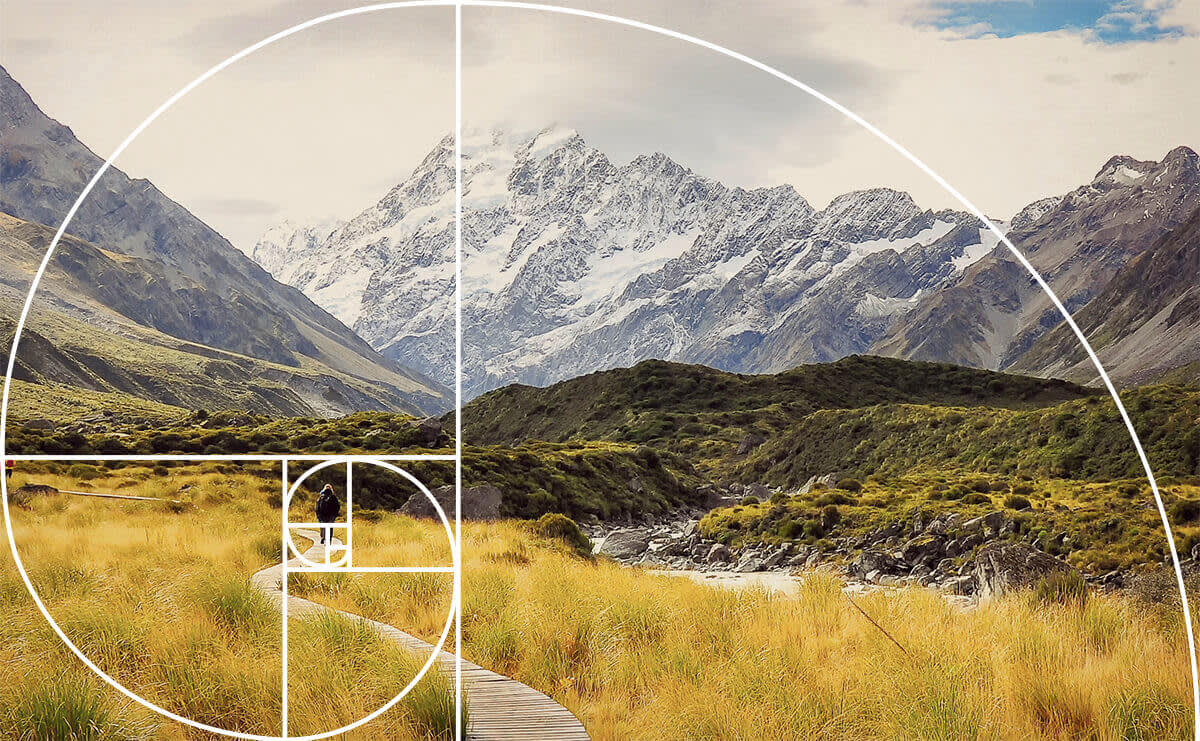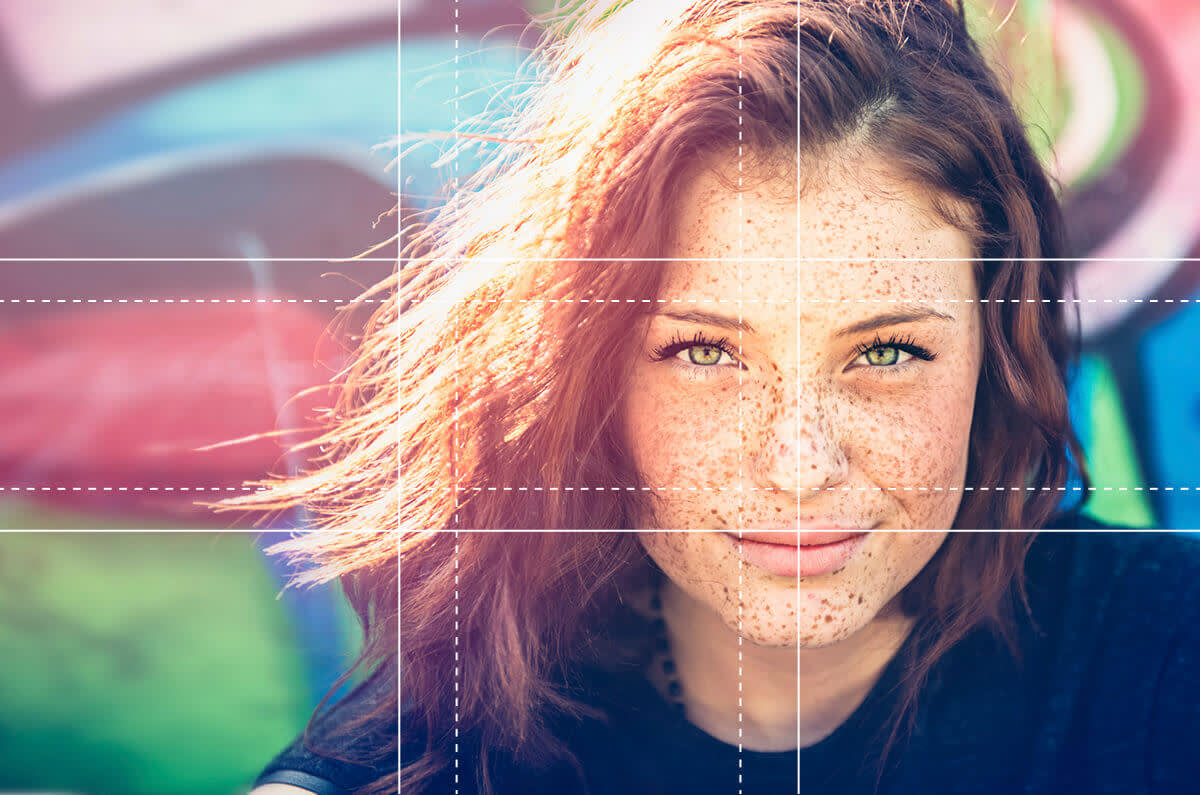What is the golden ratio?
The golden ratio has more monikers than Cordozar Calvin Broadus, Jr. and Sean Combs combined—golden mean, phi, and divine proportion, to name a few. Whatever you want to call it, it asserts that the ideal, most eye-pleasing proportions are 1:1.618.
The golden ratio and composition
Getting that can’t-look-away quality in your photos involves a number of things, but one of the biggies is composition. Well-composed photos feel balanced, interesting, and have a sense of order or organization. They grab your eyeballs and lead them around the image without you even realizing it.
If you’ve given some thought to composition with your pics, you’ve probably encountered the nine-block grid associated with the rule of thirds. But that’s not the only composition trick in Photo Town. The golden ratio is a well-revered composition rule that’s been around since the days when togas weren’t just a college party accessory. Buckle up and get ready to discover a different way of thinking about your pics (and learn a little bit about numbers, grids, and math). We’re diving into the golden ratio and how it’s applied in photography.
How to find the golden ratio
The seemingly random 1:1.618 ratio is found by dividing a line into two parts—one longer, one shorter. When a line is divided so that the length of the longer part divided by the shorter part is equal to the length of the total line divided by the longer part, you’re left with a ratio of 1:1.618 (try it out at Math is Fun).
The golden ratio is said to have been used by famous artists such as Leonardo Da Vinci and Salvador Dali, as well as appearing in nature (hurricanes, nautilus shells, and plants frequently top the Golden-Ratio-in-Nature lists). Although it’s important to note that exactly where the ratio appears is the subject of some debate. The ratio is also employed in a variety of disciplines, from architecture to psychology. And one political figure’s famous head.
Fibonacci and golden spirals
If you create a rectangle with proportions of 1:1.618 (called a golden rectangle) and then slice it up into progressively smaller golden rectangles, you’ll end up with something that probably reminds you of a snail shell, called a golden spiral.

The Fibonacci or golden spiral can be flipped or turned—the shape and distance between loops are what’s important.
You can arrive at the same shape by using Fibonacci numbers (yup, the sequence of numbers Dan Brown made famous with non-mathy people) to create squares.The Fibonacci sequence is related to the golden ratio because if you look at any two successive numbers in the sequence, their ratio is pretty darn close to the golden ratio. Which is why you’ll often find the words “Fibonacci spiral” associated with the golden ratio.
The phi grid
The phi grid is another application of the golden ratio. At first glance, it looks like a slightly irregular copy of the rule of thirds grid. But there’s a method to this madness: instead of using the 1:1 ratio employed in the rule of thirds grid and dividing an image into nine equal parts, the phi grid uses the golden ratio with a 1:0.618:1 setup—basically, the middle column isn’t as wide as the left and right columns.

The dashed lines on this photo represent the phi grid, and the solid lines represent the rule of thirds grid. See the difference?
Grids, spirals, and your pics
If your head is spinning with all of this talk of numbers, spirals, and grids, fahgettaboudit. You don’t need to fully master the math behind the golden ratio in order to use it effectively.
The phi grid, Fibonacci spiral, and rule of thirds grid all serve the same purpose: to help you figure out where your points of interest should be, so you can create more arresting images.
To use the phi or rule of thirds grids, place your subject at one of the intersections of the lines. With the spiral, place a point of interest at the smallest part. This will lead your viewer’s eye around the image. It’s important to note that the spiral can be flipped and moved around—the space between loops and the overall shape are what’s important.
When using the Fibonacci spiral to compose your images, put a point of interest (like your subject’s eye) in the smallest part. This helps lead your viewer around your image.

When using the Fibonacci spiral to compose your images, put a point of interest (like your subject’s eye) in the smallest part. This helps lead your viewer around your image.
There’s a lot of debate about whether the spiral, rule of thirds, or phi grid is the best for photography. Some say that the spiral is best for portraits, with the subject’s eye placed in the smallest part, and that the grid works better for landscapes. However, every picture is different and there isn’t a hard and fast rule about which guideline to use with which type of photo.
The rule of thirds is lauded for its simplicity and ease of use—some speculate that it was created from the phi grid, since it’s easier to envision nine equal parts than a grid with a 1:1.618 ratio. One common complaint is that the rule of thirds looks “too obvious,” and that the golden ratio allows for more natural, less rigid composition. Ultimately, knowledge is power, and the more tools and rules you have at your disposal, the better. Try envisioning the spiral or grids when composing your images, and put ’em to work when you’re cropping.
